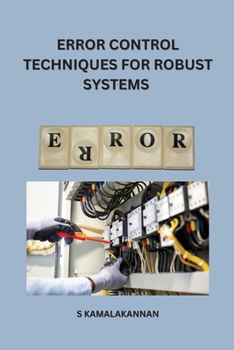Error control techniques for robust systems
Error control techniques for robust systems are an essential aspect of modern technology that aims to ensure reliable and uninterrupted operation in the face of potential faults, disturbances, or uncertainties. These techniques encompass a wide range of methodologies, algorithms, and strategies designed to detect, correct, and mitigate errors in various systems, such as communication networks, computer systems, control systems, and autonomous vehicles, among others. At the core of error control techniques lie the principles of fault tolerance and resilience. The objective is to create systems that can continue functioning as expected, or at least in a graceful degradation mode, even when facing adverse conditions or unexpected events. The overall goal is to enhance system reliability, reduce downtime, prevent catastrophic failures, and ultimately deliver a seamless and robust user experience. One of the fundamental aspects of error control techniques is error detection. This involves mechanisms to identify errors or anomalies in data, signals, or system states. Various methods can be used for error detection, including checksums, parity checks, cyclic redundancy checks (CRC), and advanced algorithms like Hamming codes or Reed-Solomon codes. These techniques allow systems to validate data integrity and identify potential issues. Error correction is another critical aspect of error control techniques. When errors are detected, error correction methods come into play to restore the data or system state to its intended state. Forward Error Correction (FEC) is a commonly used approach in communication systems, where redundant information is added to the transmitted data, enabling the receiver to reconstruct the original message even if some errors occurred during transmission. In addition to error detection and correction, error control techniques often involve error prevention and avoidance. Measures are put in place to reduce the likelihood of errors occurring in the first place. These preventive strategies can include redundancy in hardware components, careful software design and testing, proper validation and sanitization of inputs, and robust system architectures that account for potential failure scenarios.
Format:Paperback
Language:English
ISBN:9812346511
ISBN13:9789812346513
Release Date:July 2023
Publisher:Amigos Publishings
Length:126 Pages
Weight:0.39 lbs.
Dimensions:0.3" x 6.0" x 9.0"
Related Subjects
Business Business & Investing Education Education & Reference Engineering TechnologyCustomer Reviews
0 rating





